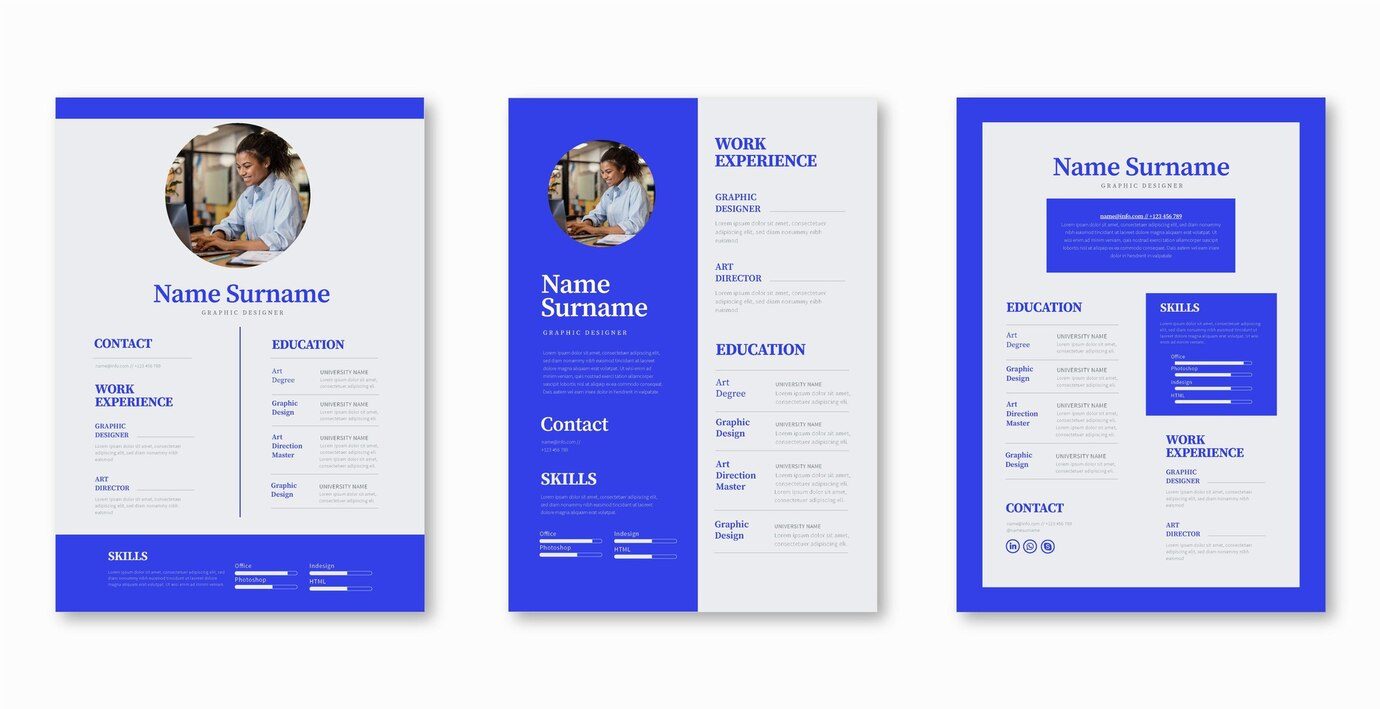The advent of Applicant Tracking Systems (ATS) has transformed the recruitment landscape. These automated systems streamline the hiring process for employers by enabling them to efficiently sift through a vast pool of resumes to identify qualified candidates. As a job seeker, mastering the intricacies of ATS friendly resumes is crucial for ensuring that your resume stands out and passes through initial screenings.
This guide explores the nuances of ATSs and provides essential strategies to navigate them effectively. Optimizing your resume for ATS is necessary when job hunting, as it is the gateway to securing interviews and opportunities.
Understanding Applicant Tracking Systems
What is an Application Tracking System?
An Applicant Tracking System is a software application utilized by employers to manage and streamline the recruitment process. Its primary function is to automate the initial stages of candidate screening. ATS parses and stores resumes, extracting key information such as contact details, work experience, and skills. This allows companies to manage a high volume of resumes efficiently and makes it easier for recruiters to identify potential matches.
How ATS Scans and Parses Resumes
1. Parsing Keywords and Formatting: ATS relies heavily on parsing algorithms to extract relevant information. This includes identifying keywords that match the job description and evaluating the overall formatting of the resume.
2. Common ATS Functionalities and Limitations: Understanding the functionalities and limitations of ATS is crucial. While these systems enhance efficiency, they may struggle with certain formats, fonts, and complex graphics. Recognizing these limitations allows job seekers to tailor their resumes effectively.
Related: The Secrets of Resume Building: How to Craft a Winning Document That Gets You Hired
The Importance of ATS Friendly Resumes
Employers often receive an overwhelming number of applications for a single job opening. Consequently, ATS acts as the gatekeeper, swiftly scanning and filtering resumes based on predefined criteria set by the hiring managers. This automated process significantly reduces the time spent on initial screenings. It allows recruiters to focus on assessing candidates who meet the specified qualifications.
Why Tailor ATS Friendly Resumes?
1. Higher Chances of Passing Initial Screening: ATS optimized resumes increase the probability of progressing to the next stage of the recruitment process. Your resume becomes aligned with the system’s parameters and preferences.
2. Effective Matching with Job Descriptions: Crafting ATS friendly resumes involves aligning the content with the job description. It also means ensuring that essential keywords and skills are prominent. This alignment significantly enhances the chances of being ranked higher in the ATS results.
Statistics Reinforcing the Need for ATS Optimization
- Increased Application Volumes: With online job applications becoming the norm, a single job posting can receive hundreds, if not thousands, of applications.
- ATS Driven Rejection Rates: Research indicates that a staggering percentage of resumes get rejected at the ATS stage due to formatting inconsistencies or lack of relevant keywords. Even qualified people can get rejected because of this.
Related: Resume Examples That Get You Hired
Strategies for Creating ATS Friendly Resumes
Creating a resume tailored for Applicant Tracking Systems involves ensuring these automated systems effectively recognize your qualifications. Here are detailed strategies to create ATS Friendly resumes:
Keyword Optimization
Understanding the job description is crucial to identify relevant keywords. These keywords often include specific skills, experiences, certifications, and industry-related terms. Strategically incorporate these keywords throughout your resume, primarily in the skills, experience, and summary sections. Natural integration is preferred in comparison to excessive repetition to maintain readability and authenticity.
Formatting Guidelines
Simplicity is key when it comes to formatting ATS friendly resumes. Stick to standard fonts like Arial, Calibri, or Times New Roman to ensure readability by ATS. Avoid using images, tables, or intricate formatting that may confuse the system. Maintain a clear and linear layout, using bullet points to present information concisely and making it easier for ATS to parse and interpret.
Tailoring for Specific Jobs
Customize your resume for each job application. Use language similar to the job description without compromising the accuracy of your experiences and skills. Highlight achievements and experiences that directly align with the requirements outlined in the job posting. Tailoring your resume not only satisfies ATS but also showcases your suitability for the specific role.
Section Headings and Order
Utilize standard section headings such as “Work Experience,” “Education,” and “Skills” to enhance readability for both ATS and human reviewers. Place the most relevant information at the top of each section, ensuring crucial details catch immediate attention. This hierarchical structure aids in efficiently guiding ATS through your resume and presenting key qualifications prominently.
Avoiding Non-Text Elements
Applicant Tracking Systems might struggle with non-text elements like graphics, charts, or headers and footers. Minimize the use of such elements to prevent potential parsing issues. While visual elements can enhance a human-readable resume, an ATS-friendly version should prioritize text-based content to ensure proper interpretation by the system.
Regular Updates and Revisions
Regularly update and revise your resume based on industry trends, job requirements, and changes in your qualifications. Keeping your resume current ensures that it remains relevant, includes the latest keywords, and aligns with the expectations of both ATS and hiring managers.
Employing these strategies ensures that your resume is not only optimized for ATS but also remains compelling and readable for human reviewers. Balancing these aspects increases the chances of your application making it past the initial screening and grabbing the attention of potential employers, positioning you as a qualified and desirable candidate in the competitive job market.
Related: 10 Essential Job Search Strategies to Land Your Dream Job
Best Practices for ATS Friendly Resumes Optimization
Clear and Relevant Content
- Concise and Information-Rich Descriptions: Use bullet points to describe job roles and responsibilities. Focus on quantifiable achievements, metrics, and outcomes to showcase relevance.
- Prioritizing Relevant Skills: Highlight the most pertinent skills and experiences at the beginning of sections, ensuring crucial details catch the ATS’s attention immediately.
Avoiding ATS Pitfalls
- Steering Clear of Common Mistakes: Avoid excessive use of images, graphics, headers/footers, or unusual fonts that may disrupt ATS parsing. Stick to a standard and straightforward layout.
- Optimizing File Types: Submit resumes in ATS-compatible file formats such as .docx or .pdf to ensure they are easily readable and parsable.
Tools and Resources for ATS Friendly Resume Creation
Numerous tools and resources have emerged to assist job seekers in creating resumes optimized for Applicant Tracking Systems. These resources offer templates, analyzers, and guidance, streamlining the process of crafting a resume that aligns with ATS requirements.
ATS Friendly Resume Templates
Several online platforms provide pre-designed templates specifically tailored for ATS compatibility. These templates ensure that your resume meets the necessary formatting guidelines for optimal parsing by these systems. From simple and clean designs to more elaborate yet ATS friendly layouts, these templates offer a starting point for job seekers to structure their resumes effectively. There are many free and premium ATS friendly resumes available online, such as those offered by Jobscan, Novoresume, and Resume Worded. These templates are typically editable in Microsoft Word and can be customized with your information.
ATS Checkers and Analyzers
ATS checkers and analyzers are valuable tools that assess the compatibility of your resume with different Applicant Tracking Systems. They scrutinize your document for formatting errors, keyword relevance, and overall ATS compatibility. These tools provide insights into areas that might hinder your resume’s performance within these systems, offering suggestions for improvement.
Examples
- SkillSyncer: A free ATS resume checker and job application tracker that automates the comparison of your resume to job descriptions.
- Resume Scanner by ResumeWorded: A powerful resume scanner that provides detailed feedback on your resume’s impact, keywords, and ATS compliance.
- TopResume: Offers free ATS friendly resume scans as part of their service. The scan provides an objective look at what your resume is doing well and where it is missing the mark.
- Jobscan: It provides a score based on the number of keywords and phrases matched with the job description and offers suggestions for improvement.
LinkedIn and Online Portfolio Optimization
Optimizing your LinkedIn profile and online portfolios to align with your resume can also enhance your job application success. These platforms often serve as extensions of your resume, allowing you to showcase additional skills and achievements. Optimizing them for keywords and relevant information can further improve your chances of being discovered by recruiters.
Understanding and utilizing these tools empowers job seekers to create compelling resumes that not only navigate through Applicant Tracking Systems but also capture the attention of hiring professionals.
Related: Step-by-Step Guide to Crafting a Standout CV
Conclusion
Crafting an ATS friendly resume is a critical step in today’s job market. With Applicant Tracking Systems acting as the initial filters in the hiring process, understanding their function and tailoring your resume is paramount. By aligning your resume with job-specific keywords and formatting guidelines, you increase your chances of passing through these systems, and you ensure your qualifications reach human eyes.
These systems serve as gatekeepers, but your tailored resume and holistic approach to job applications make you a standout candidate. The tips outlined in this guide will help you navigate through and beyond the initial screening toward career success.
- ATS Friendly Resumes: Navigating Applicant Tracking Systems Effectively - December 15, 2023
- Top 12 Good Reasons for Leaving a Job: A Comprehensive Guide - December 12, 2023
- Creating a Career Development Plan: A Step-by-Step Guide - December 5, 2023



